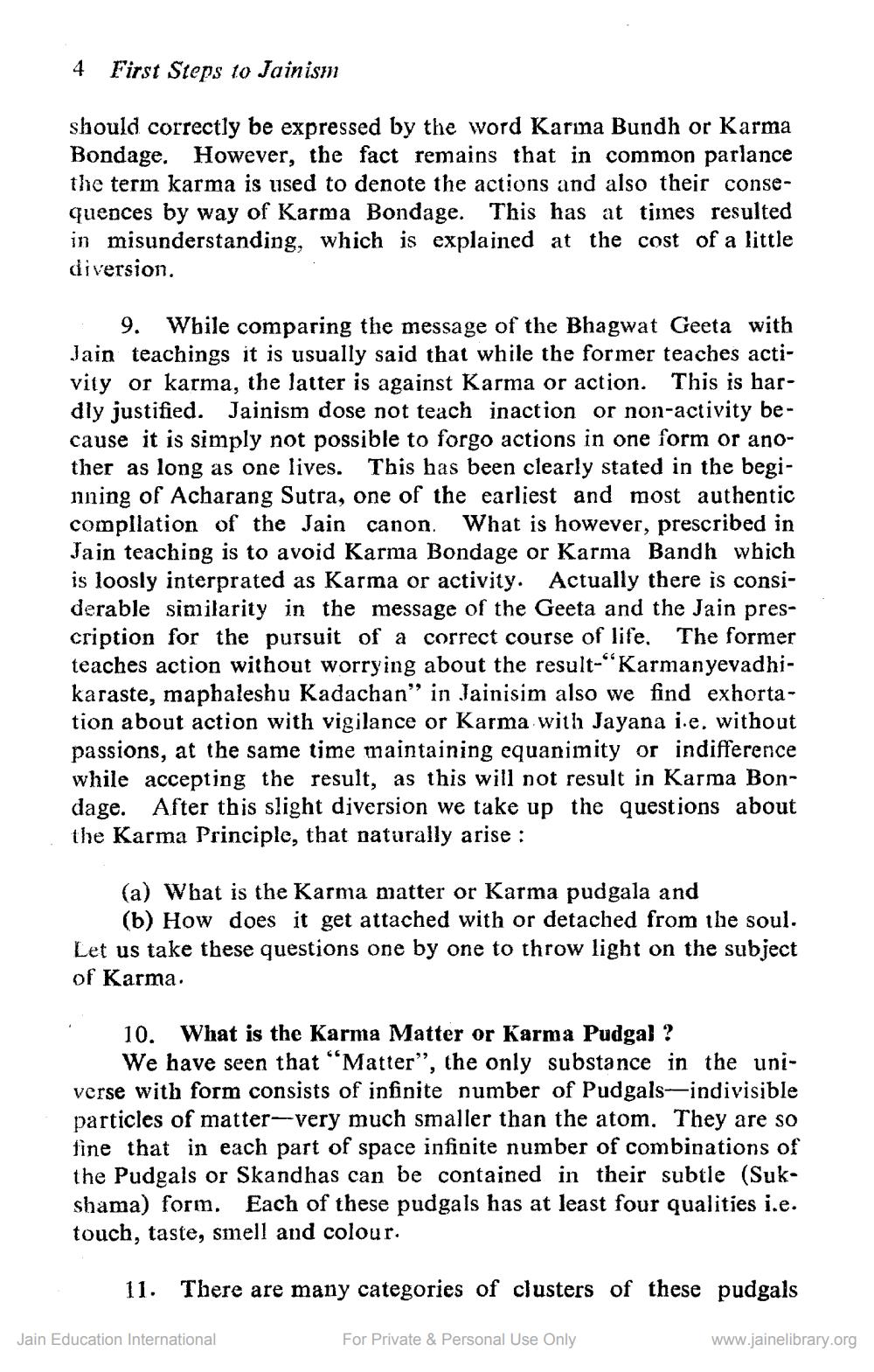________________
4
First Steps to Jainism
should correctly be expressed by the word Karma Bundh or Karma Bondage. However, the fact remains that in common parlance the term karma is used to denote the actions and also their consequences by way of Karma Bondage. This has at times resulted in misunderstanding, which is explained at the cost of a little diversion.
9. Wbile comparing the message of the Bhagwat Geeta with Jain teachings it is usually said that while the former teaches activity or karma, the latter is against Karma or action. This is hardly justified. Jainism dose not teach inaction or non-activity because it is simply not possible to forgo actions in one form or another as long as one lives. This has been clearly stated in the beginning of Acharang Sutra, one of the earliest and most authentic compllation of the Jain canon. What is however, prescribed in Jain teaching is to avoid Karma Bondage or Karma Bandh which is loosly interprated as Karma or activity. Actually there is considerable similarity in the message of the Geeta and the Jain prescription for the pursuit of a correct course of life. The former teaches action without worrying about the result-"Karmanyevadhikaraste, maphaleshu Kadachan" in Jainisim also we find exhortation about action with vigilance or Karma with Jayana i.e. without passions, at the same time maintaining equanimity or indifference while accepting the result, as this will not result in Karma Bondage. After this slight diversion we take up the questions about the Karma Principle, that naturally arise :
(a) What is the Karma matter or Karma pudgala and
(b) How does it get attached with or detached from the soul. Let us take these questions one by one to throw light on the subject of Karma.
10. What is the Karma Matter or Karma Pudgal ?
We have seen that “Matter”, the only substance in the universe with form consists of infinite number of Pudgals--indivisible particles of matter--very much smaller than the atom. They are so fine that in each part of space infinite number of combinations of the Pudgals or Skandhas can be contained in their subtle (Sukshama) form. Each of these pudgals has at least four qualities i.e. touch, taste, smell and colour.
11. There are many categories of clusters of these pudgals
Jain Education International
For Private & Personal Use Only
www.jainelibrary.org




